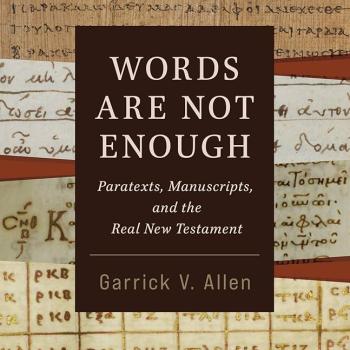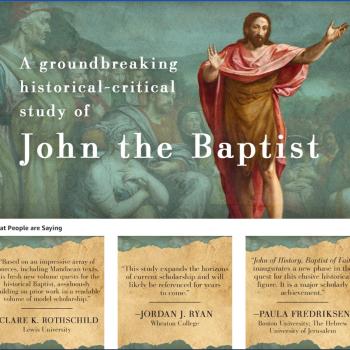One of the methodological questions that intersects with my upcoming conference paper on the Mandaean Book of John and the New Testament is the question of how, if at all, we can discern whether one text which is later than another is not drawing on that earlier text alone, but also incorporates independent tradition. This question relates not only to the Mandaean Book of John, but many other more or less familiar instances:
 Matthew and Luke in relation to Mark (and the subject of Q)
Matthew and Luke in relation to Mark (and the subject of Q)- The Gospel of John in relation to the Synoptics
- The Gospel of Thomas in relation to the canonical Gospels
- The Gospel of Peter in relation to the canonical Gospels
- The relationship of the Pseudo-Clementine literature to earlier texts such as the Gospel of Thomas
And I could go on.
My conference paper (which I hope to blog about more in the coming days leading up to the Society of Biblical Literature conference at which I will present it) is not focused on this question of methodology per se. It is simply another question, like those which New Testament scholars (and other historians and scholars of early Christianity and other ancient religions) regularly ask, which depends on this question of methodology. But for that reason I am obviously interested in the methodological question itself – or perhaps I should say methodological questions in the plural, since there is reason to conclude that drawing on earlier written sources and drawing on independent oral tradition can produce end products which will have different features.
When it comes to written sources, a change in style or the presence of distinctive or archaic terms not used elsewhere by the author may provide important clues. This is one of the reasons I think that Theodore bar Koni’s section on the Mandaeans (or Dostheans as he calls them) in his Scholia derives from an earlier written source. Not only his quotation of the Ginza, but the entire section, reflects the Aramaic dialect spoken by the Mandaeans, and thus probably comes from a source in or from southern Mesopotamia.
But in many cases the evidence is less clear-cut, and the subject becomes more complex if we are trying to discern the use of other sources – whether written or oral – besides one or more specific texts we possess. In such instances, the very fact that a particular possible source has survived may make it harder to determine whether some other source may have been used, instead of or in addition to that one that we happen to have. In trying to address such matters, we may have little to go on other than the presence of details which do not reflect the earlier texts we know, and which are unlikely to have been invented by the author in question, and unlikely to represent deliberate changes to the earlier text in question.
What do readers of this blog think? While I am interested in the Mandaean Book of John for my conference paper, I expect that most readers will be more interested in and familiar with other texts. What leads you to conclude, or to reject the conclusion, that Luke used not Matthew but an earlier source which overlaps with Matthew? What leads you to conclude, or reject the conclusion, that the Gospel of Thomas incorporates traditions independent of but related to the canonical Gospels? What other examples can you think of, from any time period or language, where similar questions come up?
(Of related interest, Mark Goodacre has posted a podcast on the Gospel of Thomas and Anthony Le Donne has a post on memory in Jesus research)












